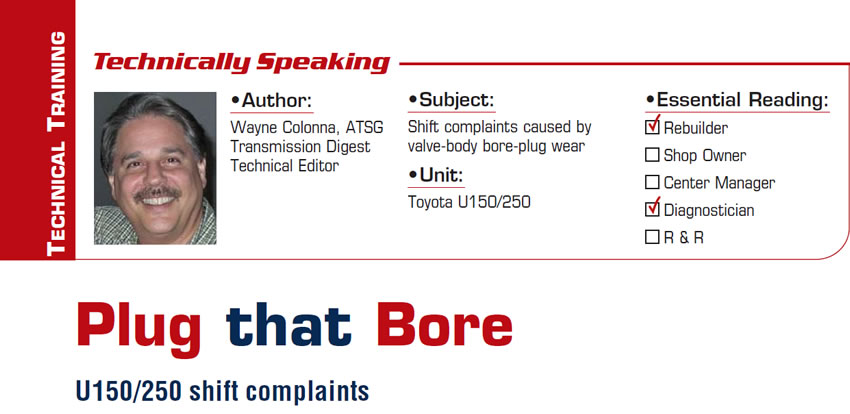Ford Code P2544
This article is a complement to this month’s Shift Pointers article titled “Which Came First, the Chicken or the Egg?” If you have yet to read it, after you’re finished reading here you may want to flip over to page 60 and give it a read.
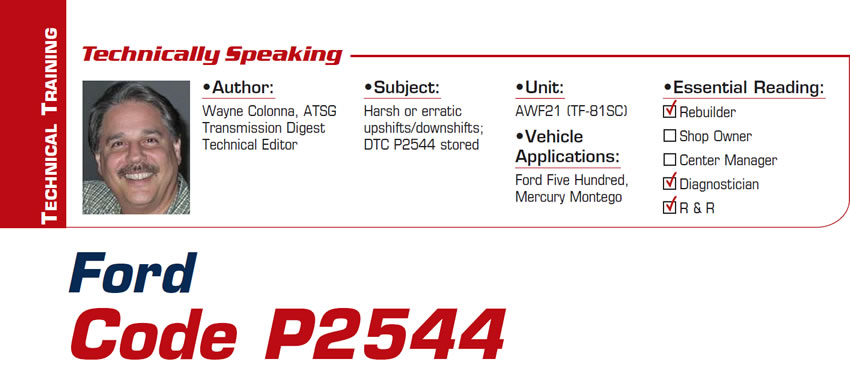
Volkswagen DSG 02E: A simple fix for a solenoid problem
With the increase in manufacturers forcing the purchase of subcomponent replacements rather than enabling you to buy only what you need, it’s great to get a break every once in a while. Such is the case with Volkswagen’s 02E Direct Shift Gearbox. The solenoids mounted on the valve body are not available individually, so if you needed just one solenoid you would have to buy the entire Mechatronic assembly (valve body, solenoids and TCM) for about a thousand bucks.
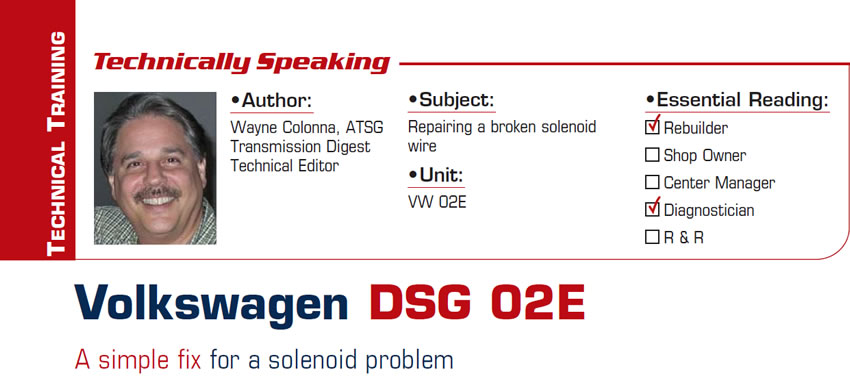
42RLE: 1st-Gear Shift Shuttle in Drive
This article, yet another pointing out cross-connect scenarios, has to do with the 42RLE input-shaft and output-shaft speed sensors.
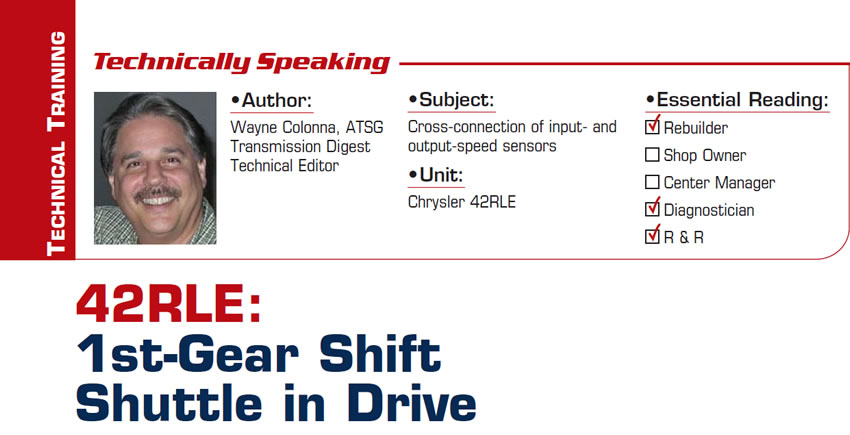
AS68RC Pressure-Switch and Performance Codes
When an Allison 1000/2000 transmission produces a pressure-switch code, it does not necessarily mean the pressure switch is faulty. A solenoid needs to stroke a valve, which then sends oil pressure to the switch to close it. If the solenoid is performing poorly, or the valve is sticking, the pressure switch will not close, causing the associated code to set.
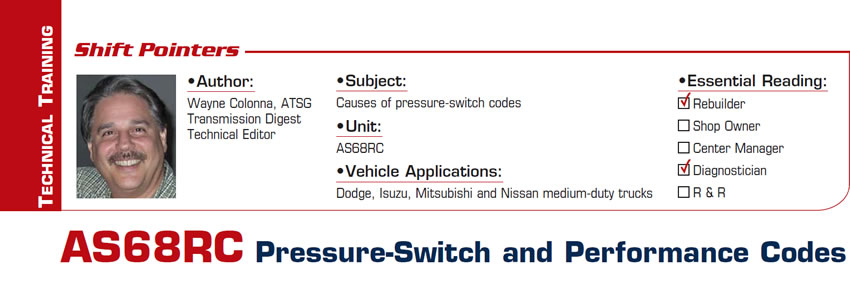
JF011-E/RE0F10A Revisited
The first point is to know that there are two different types of internal wiring harnesses among Dodge, Mitsubishi and Nissan vehicles. Mitsubishi and Nissan provide an internal ground for all their solenoids and the stepper motor (Figure 1); Dodge provides an external ground for three solenoids (Figure 2).
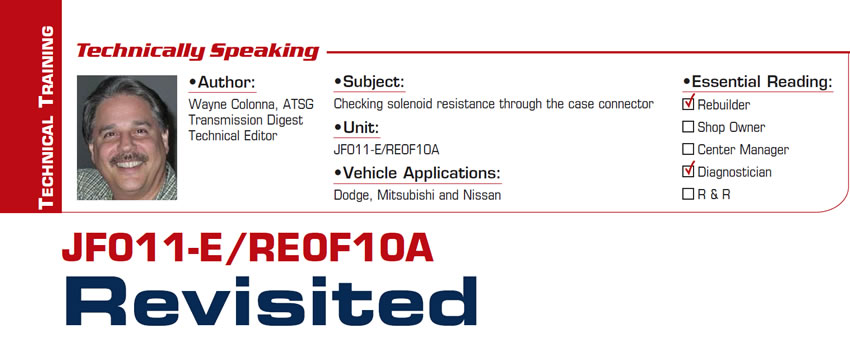
Keep Your Eye on the Ball
If you have had the opportunity to work on a 62TE transmission, you may have noticed nine checkballs in tapered pockets that are held into place with C clips (Figure 1). In our seminars we explained that these balls are used during an assembly-line check with a special tool that pressurizes their respective circuits. Once the tool is removed these balls become plugs. Apparently this procedure was more economical when compared with the cost of providing typical pressure taps. But what this means to you is that these balls must be checked to ensure that they are in their location and that they are sealing. Otherwise you could be fighting a variety of different complaints.
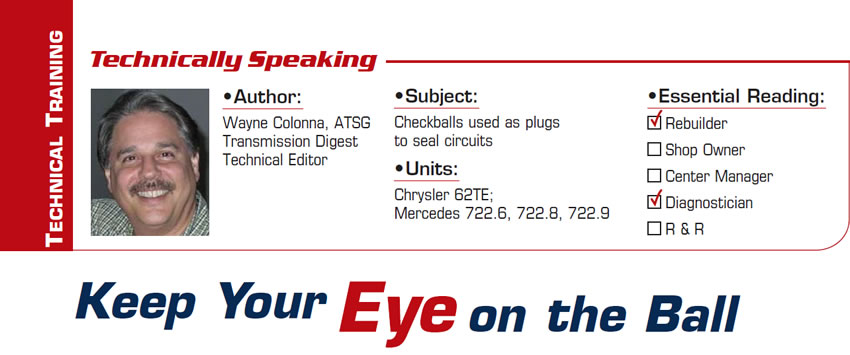
JF011E/RE0F10A: Bench Tips
Technically Speaking The JF011E/RE0F10A (Figure 1) is a continuously variable transmission used in Dodge, Mitsubishi and Nissan vehicles as far back as 2007. These units have been increasingly visiting the shops for a variety of reasons. Some issues are repairable, but at other times the unit needs to be replaced. In some instances, electrical components
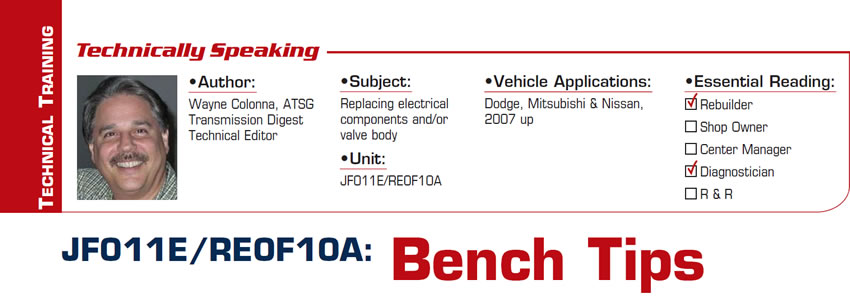
A Balancing Act
There is very little information written about this transmission concerning the valve body and its associated hydraulic operations. For this reason ATSG has produced a Technician Guide that provides extensive information including valve-body mapping and a complete set of hydraulics. In the process of developing this guide, we discovered a unique way in which this unit controls clutch application. The high-clutch amplifier valve in the upper valve body (Figure 2) serves as a perfect example.
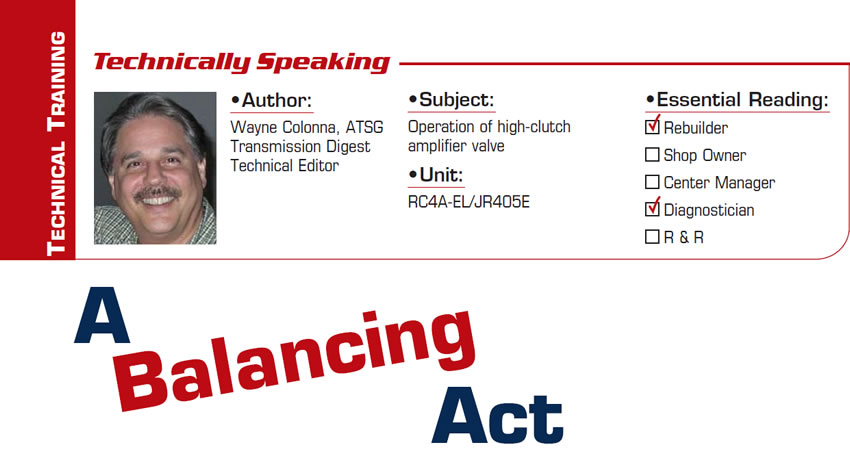
Close but No Cigar
The design of the OD planetary system in these transmissions allows for a 1:1 ratio from the input shaft to the center shaft until the overdrive band comes on and holds the sun gear. When this happens, the input shaft will spin slower than the center shaft.
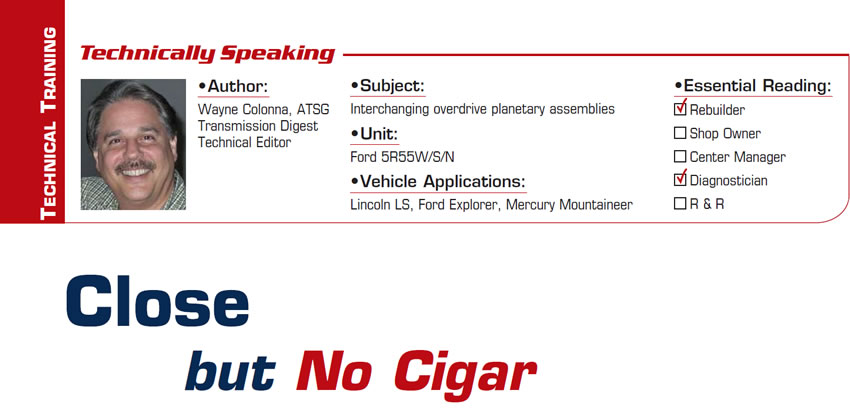
The Secret Code
When an electrical failure or some type of system failure occurs, prompting the computer to initiate a programmed failsafe condition for the transmission, it is essential for the technician to have the ability to obtain the diagnostic service code that accompanies the failsafe condition. Not having the ability to obtain this code or codes in essence causes the technician to be blind.
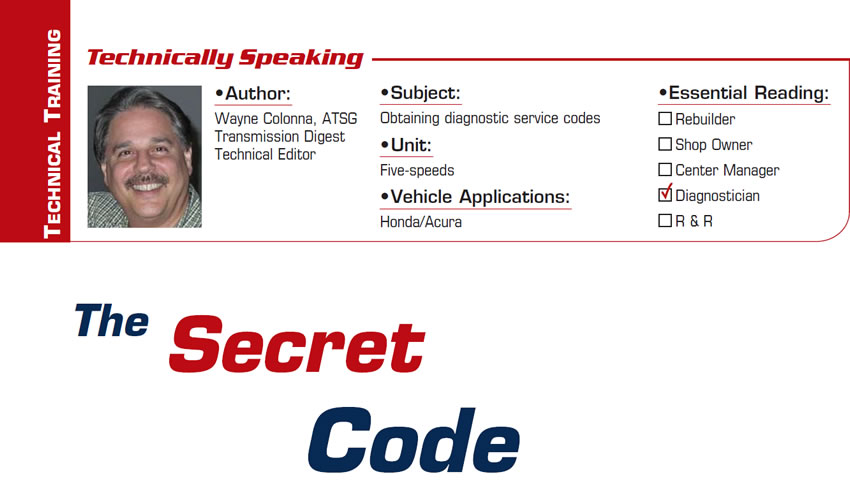
Another One to Add to the List
Throughout the years I have produced articles revealing various types of self-inflicted injuries that ate up time, energy and money unnecessarily as a way to forewarn others so they can avoid this pitfall. Many thanks go to those who have revealed their mistakes to us so we can share them with all of you, as well as the ones we have discovered on our technical hotline.
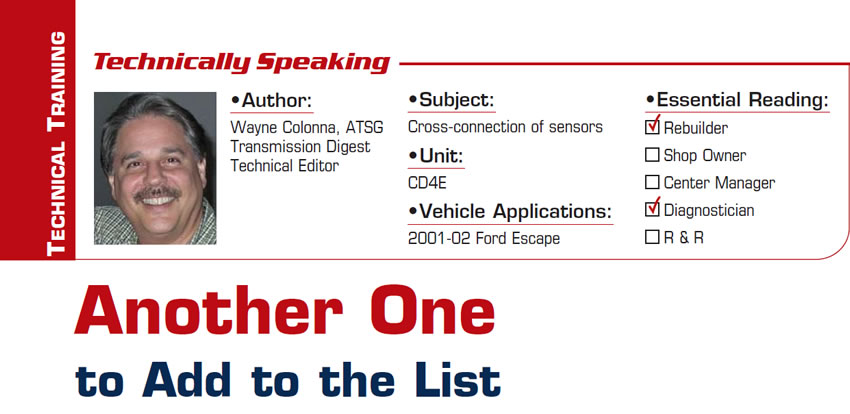
Plug that Bore: U150/250 shift complaints
Valve-body bore wear has become so common that one can just about predict which bores will wear when a new transmission hits the streets. Any valve that is regulating is up for grabs. TCC, pressure control, clutch regulating valve, whatever you want to call it, if it moves back and forth quickly and consistently, more than likely it’s going to wear the bore.
